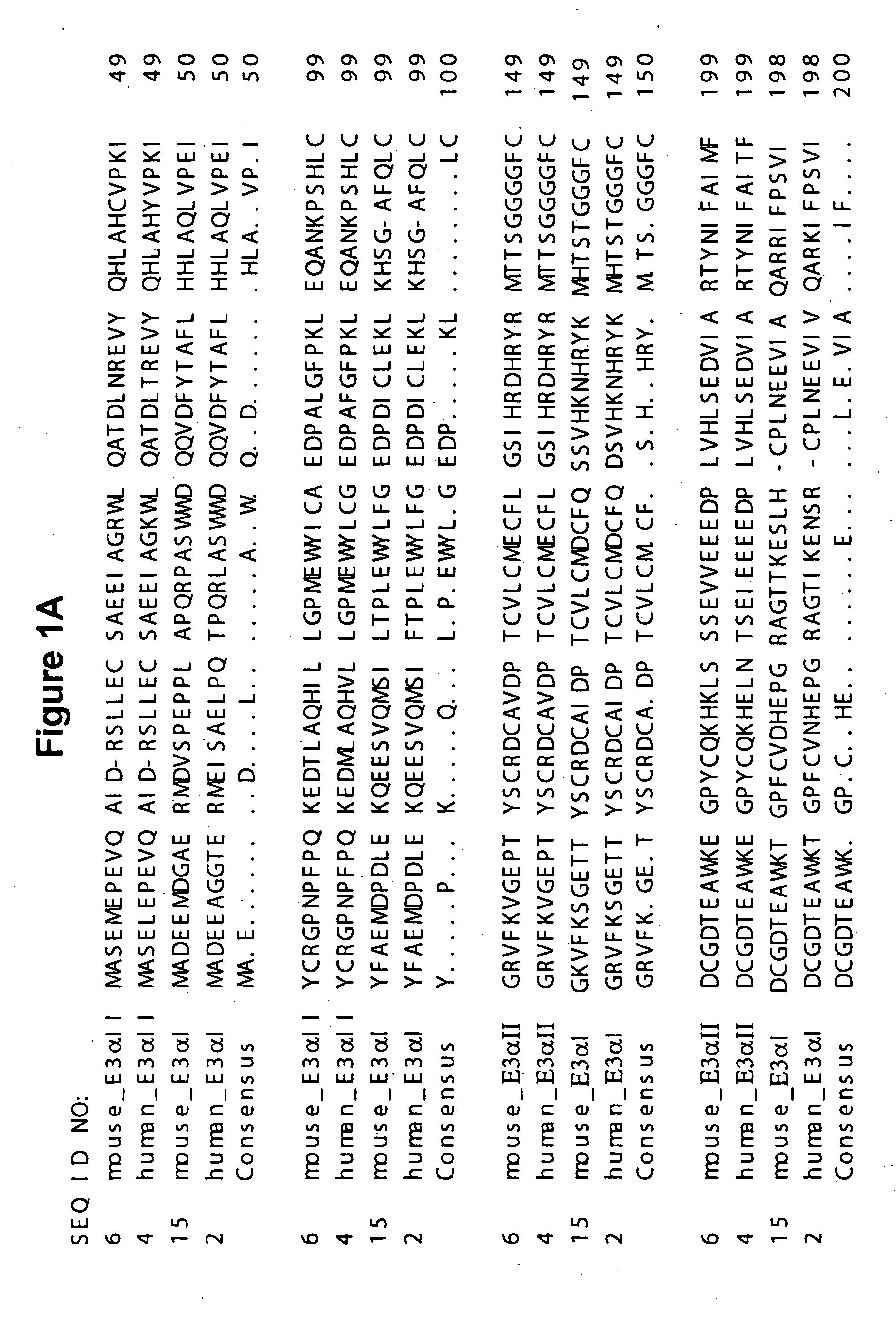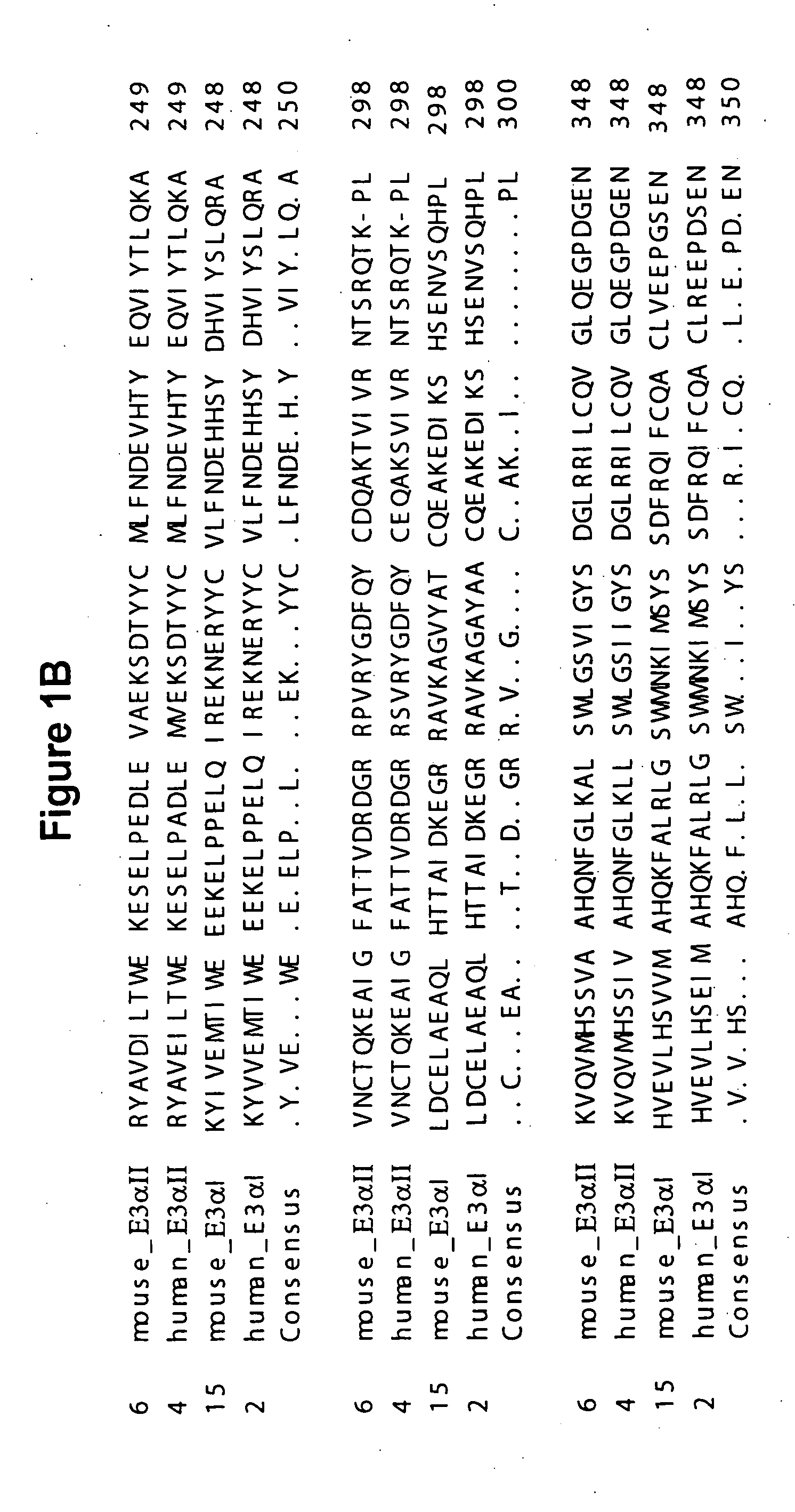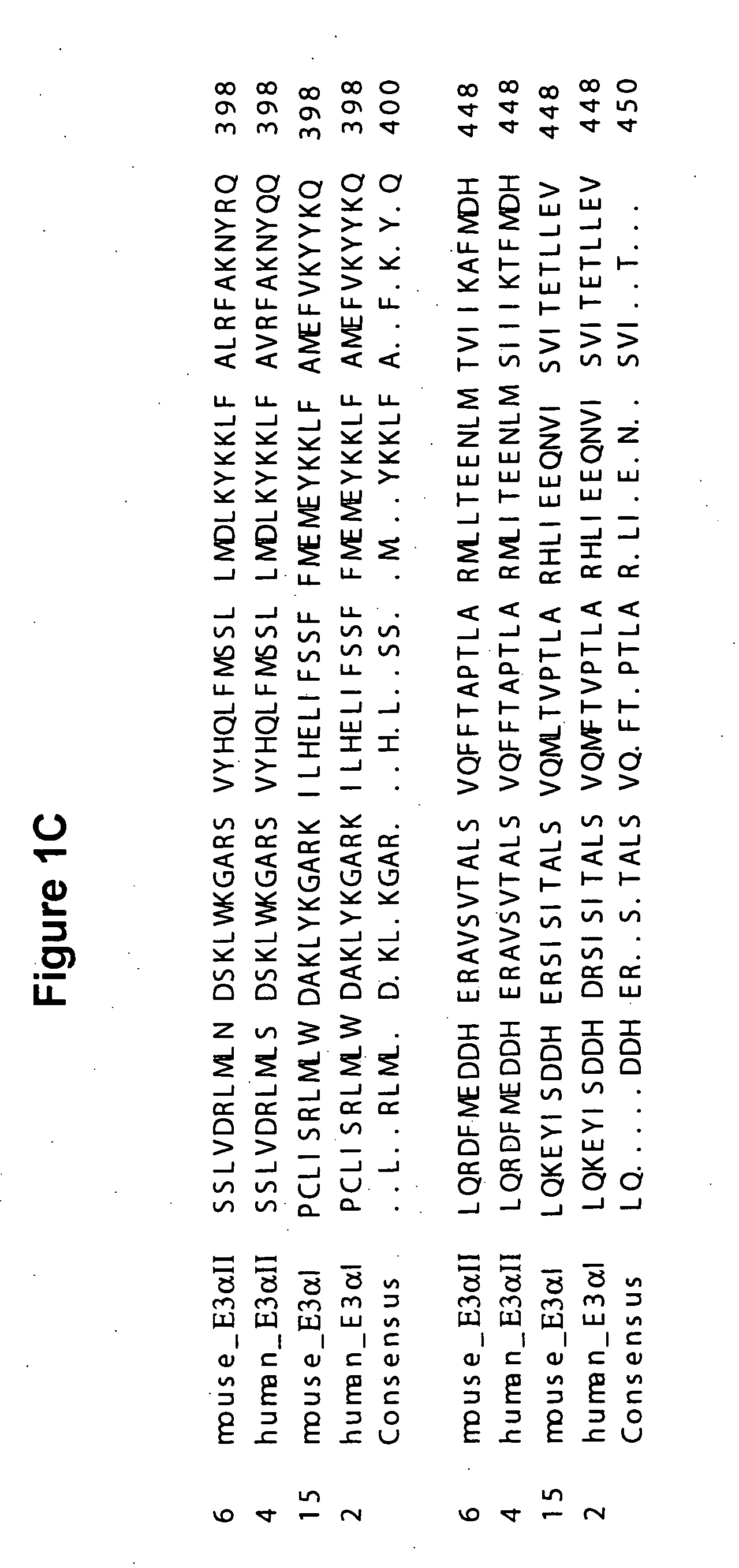Human E3alpha ubiquitin ligase family
a technology of ubiquitin ligase and human genome, which is applied in the field of human e3 ubiquitin ligase polypeptides, can solve the problems of unreachable potential for the development of novel therapeutics based on the human genome, and the structural and functional analysis of polypeptide products from many human genes have not been undertaken, so as to increase the ubiquitin content of muscles, increase the ubiquitin-conjugation of muscle proteins, and the effect of increasing
- Summary
- Abstract
- Description
- Claims
- Application Information
AI Technical Summary
Benefits of technology
Problems solved by technology
Method used
Image
Examples
example 1
Cloning of cDNA Encoding Human E3αI
[0352] Materials and methods for cDNA cloning and analysis are described in Sambrook et cal., supra. which is incorporated herein by reference.
[0353] BLAST analysis of the Genebank dbEST database with the full length murine E3α ubiquitin ligase nucleotide sequence (muE3I; Genebank Accession No.: AF061555; SEQ ID NO: 15), revealed 4 human EST sequences (Genebank accession numbers A1187306, A192195, A187306, and A1400279) which potentially encode different regions of a novel human E3α ubiquitin ligase ortholog (huE3αI) gene. Based on these EST sequences, two sets of PCR primers (#2282-91 / 2282-93 and #2282-94 / 2282-97) were designed. These sequences are set out below in Table III.
TABLE IIIPrimerSequenceSEQ ID NO:2282-91CTC CTC GAG TCT GCG TCA AAC72385-35TCT GCA TAT GTT CAG CCT TGC TA82282-94GTA TGA ACT TGC CGA GGC TTT TA92294-37CAA TAC TTT CCC AGC CCT CAG AA10
[0354] The primer sets #2282-91 / 2282-93 (SEQ ID NOS: 7 and 8) and #2282-94 / 2294-37 (SEQ ID...
example 2
Cloning of cDNA Encoding Human E3α Ortholog, huE3αII
[0359] BLAST analysis of the Amgenesis database (Amgen internal EST database) with the human E3αI amino acid sequences revealed 4 Amgenesis EST sequences (amgi-039645, smop2-0079f12 and zhgb-aa693825 and Genebank accession no.: AA002347) which encode potential regions of the human and mouse E3α ubiquitin ligase ortholog nucleotide sequences which are deonted as E3αII. Based on the zhgb-aa693825 and AA002347 sequences, two PCR primer sets (#2380-88 / 2378-32 and #2381-48 / 2385-94) were designed. These sequences are set out below in Table IV.
TABLE IVPrimerSequenceSEQ ID NO:2380-88ATG GCG TCG CTA GAG CCA112378-32CAA AGC GGC TGA GCA TGA TCA TC122381-48TGA ACA GCC AAT CAC ACT AAG CA132385-94TTA TAA ATG CCA GTC AAT GCC AA14
[0360] The primer sets #2380-88 / 2378-32 (SEQ ID NOS: 11 and 12) and #2381-48 / 2385-94 (SEQ ID NOS: 13 and 14) were used to generate two PCR products which encode the coding region of a novel ortholog of human E3α ligase...
example 3
Cloning of the Murine E3αII Ortholog
[0363] BLAST analysis of the Amgen internal database, Amgensis, with human E3αII amino acid sequences identified the mouse cDNA clone (Smop2-00079-f12) as a potential mouse ortholog of E3αII ubiquitin ligase. The Amgenesis database contained the entire coding region of the mouse E3αII ubiquitin ligase (muE3αII) gene. The cDNA clone of was obtained from the Amgen sequencing group. The sequence of the clone was confirmed to be the full cDNA of muE3αII as described in Example 1. The nucleic acid sequence of muE3αII (SEQ ID NO: 5), consists of an open reading frame of 5265 nucleotides which encodes a 1755 amino acid polypeptide, in addition to 765 bp in the 5′ untranslated region and 56 bp in the 3′ untranslated region.
PUM
| Property | Measurement | Unit |
|---|---|---|
| molecular weight | aaaaa | aaaaa |
| molecular weight | aaaaa | aaaaa |
| molecular weight | aaaaa | aaaaa |
Abstract
Description
Claims
Application Information
 Login to View More
Login to View More - R&D
- Intellectual Property
- Life Sciences
- Materials
- Tech Scout
- Unparalleled Data Quality
- Higher Quality Content
- 60% Fewer Hallucinations
Browse by: Latest US Patents, China's latest patents, Technical Efficacy Thesaurus, Application Domain, Technology Topic, Popular Technical Reports.
© 2025 PatSnap. All rights reserved.Legal|Privacy policy|Modern Slavery Act Transparency Statement|Sitemap|About US| Contact US: help@patsnap.com



